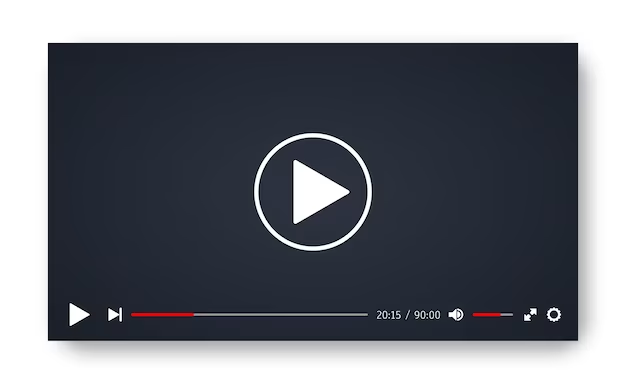What is High Serve in Badminton: Mastering the Art of Precise Placement
Are you a badminton enthusiast looking to enhance your skills on the court? One crucial technique that can elevate your game is the high serve in badminton. This article will delve into the intricacies of the high serve, its purpose, execution, variations, and answer frequently asked questions. Mastering the high serve will not only impress your opponents but also provide you with a strategic advantage during intense matches. So, let’s dive into the world of the high serve and discover how it can boost your badminton prowess.
Understanding the High Serve
Defining the High Serve
The high serve in badminton refers to a technique where the shuttlecock is hit high into the air, allowing it to travel deep into the opponent’s court. Unlike other serves, the high serve aims to create opportunities for players to gain control of the rally and dictate the pace of the game.
Purpose and Benefits
The high serve serves several purposes in badminton. Firstly, it allows players to push their opponents towards the back of the court, making it harder for them to launch aggressive attacks. Secondly, the high serve can disrupt the opponent’s rhythm, forcing them to readjust their positioning and potentially create openings for counter-attacks. Lastly, it can act as a defensive strategy, providing players with time to regain their footing and react to their opponent’s shots.
Implementation and Usage
The high serve is typically employed during specific situations within a game. It is commonly used at the start of a match or after a point has been won. Moreover, players may choose to utilize the high serve when they are under pressure or need to change the momentum of the game. By understanding when and how to use the high serve effectively, players can gain a significant advantage over their opponents.
Technique and Execution
Mastering the High Serve Technique
To execute a high serve with precision, players need to focus on their grip, body positioning, and swing. The grip should be relaxed, allowing for a flexible wrist movement. Positioning is crucial, and players should stand with their non-racket foot slightly forward and their body weight evenly distributed. A fluid swing motion, incorporating a gentle flick of the wrist, will generate the necessary power and accuracy for a successful high serve.
Step-by-Step Instructions
- Begin by placing the shuttlecock in your non-racket hand.
- Position yourself correctly on the court, ensuring a stable base.
- Hold the racket with a relaxed grip, allowing for flexibility.
- Raise your non-racket hand to shoulder level, holding the shuttlecock in front of you.
- Shift your weight to your back foot and prepare to swing.
- Use a smooth, controlled swing motion, striking the shuttlecock with the racket head.
- Aim to hit the shuttlecock high into the air, directing it towards the desired location in your opponent’s court.
Common Mistakes to Avoid
While mastering the high serve, it’s essential to be aware of common mistakes that can hinder your progress. Some mistakes to avoid include gripping the racket too tightly, using excessive force during the swing, and failing to maintain proper body balance. Additionally, players should be mindful of their timing and not rush the execution, as this can lead to errors and inconsistent serves.
Strategies and Variations
Exploring Strategic Approaches
The high serve technique can be customized to suit various game situations and opponents. Players can strategically vary the placement and speed of their high serves to keep their opponents guessing and off-balance. By targeting different areas of the court, such as the backhand corner or the sidelines, players can exploit weaknesses and create scoring opportunities. Additionally, varying the speed of the high serve can disrupt the opponent’s timing and hinder their shot preparation.
Adapting the High Serve
Players can adapt the high serve to fit their unique playing style and game plan. Some variations include the flick serve, where the shuttlecock is hit with more power and speed to catch opponents by surprise. The tumbling serve, on the other hand, involves hitting the shuttlecock with a downward trajectory, making it challenging for opponents to generate power in their return shots. By incorporating these variations, players can add unpredictability to their high serve arsenal and keep their opponents on their toes.
Frequently Asked Questions (FAQs)
Q: Is the high serve suitable for all skill levels?
A: Yes, the high serve can be utilized by players of all skill levels. However, beginners may need to spend more time practicing and perfecting the technique before incorporating it into competitive matches.
Q: Can the high serve be used in doubles matches?
A: Absolutely! The high serve is equally effective in both singles and doubles matches. In doubles, it can be particularly advantageous as it allows players to gain control of the rally and set up their partner for powerful attacking shots.
Q: Are there any legal restrictions on the high serve?
A: While there are no specific restrictions on the height of the high serve, it must comply with the general rules of badminton. The serve must be below waist height and struck within the designated service area.
Q: How can I improve the accuracy of my high serve?
A: Practice is key to improving the accuracy of your high serve. Focus on consistent grip, body positioning, and fluid swing motion. Additionally, incorporating drills and receiving feedback from a coach or experienced player can greatly enhance your accuracy over time.
Conclusion
Mastering the high serve in badminton can elevate your game to new heights. By understanding the technique, purpose, and variations of the high serve, players can strategically outmaneuver their opponents and gain a competitive edge. Remember to practice diligently, focusing on grip, body positioning, and swing motion. With consistent effort, you’ll soon be serving up precision and control with your high serves. So, step onto the court, implement these techniques, and watch your badminton skills soar to new levels.
